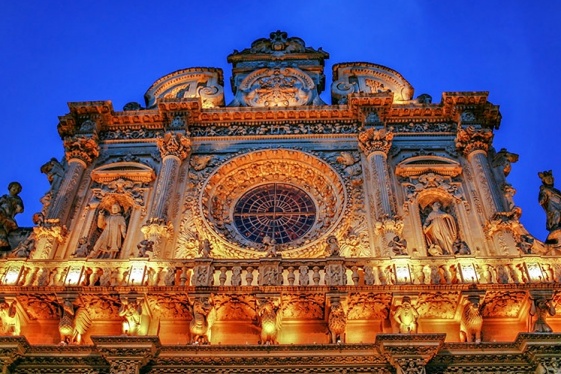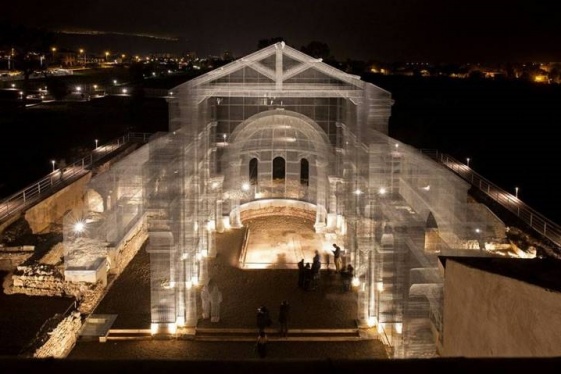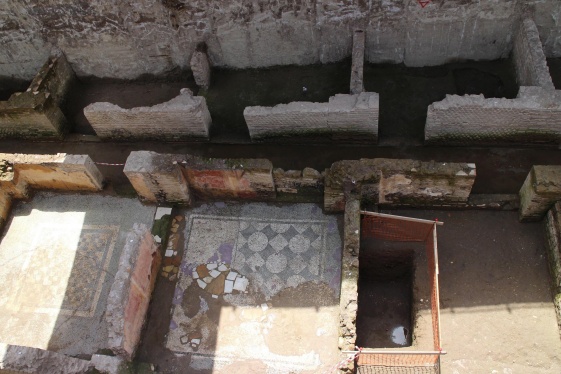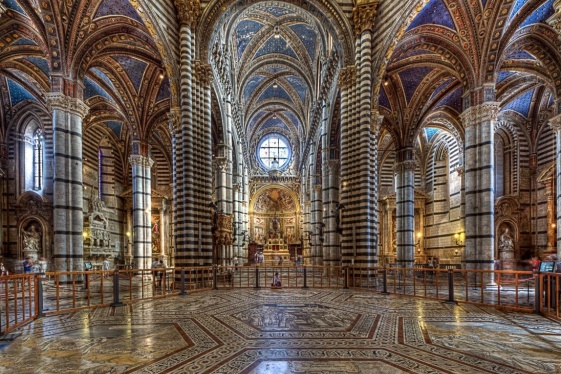
Enrico de Iulis
Enrico lives in Rome, is 44 years old, is an art historian and has a degree in glottodidactics. He’s been working as a guide with the most important roman cultural associations and he taught art history and artistic technical language at IED (Higher Institute of Design). He has published several papers about art history and glottodidactics applied to art history.
Italian art: The frescoes of Giandomenico Tiepolo
In 1727 Giandomenico Tiepolo was born, third son of Giambattista Tiepolo, the unrivaled painter of the Venetian Rococo who enchanted all the courts of Europe with his aerial style and very modern design. His mother was Cecilia Guardi, the sister of the Vedutist painters Francesco and Antonio. In short, Giandomenico was a double son of art, a concen...
Italian art: Nemi
Nemi is a small volcanic lake in the surroundings of Rome, with a small village that climbs the slopes of Mount Artemisio which takes its name from the Temple of Diana, whose remains are right behind the village. It is not surprising that the ancient Romans wanted to build a temple in this site rich in centuries-old forests, lakes and delightful na...
Italian art: Contemporary Quirinale
The approach of the Quirinale, the seat of the President of the Italian Republic, to the many proposals of art, is becoming increasingly varied. The President of the Republic, Sergio Mattarella, announced in one of his first speeches that he wanted to reopen the doors of the Palace to all Italians, and it seems to us that this promise has been fulf...
Italian art: The third column and other mysteries
A series of mysteries animate the life of Venice in the recent months. The first is rooted in the myth of Venice's history: it is the third column of Piazzetta di San Marco.
Italian art: The Third Baroque
Salento, the southernmost region of Puglia, has been experiencing an unparalleled revival of tourism for more than ten years. In addition to the two splendid seas that surround it, and the windy and undulating views of the endless rows of olive trees, the other famous beauty of Salento is Baroque.
Italian Art: Sassoferrato
These years witness important celebrations for art history, and history in general. While it is the centenary of the breakthrough in the First World War and of all its artistic and human collapses, a century before Napoleon bought up works of art in Italy for his Musée Napoleon, created in the first decade of the nineteenth century. The news concer...
Italian Art: Edoardo Tresoldi
Edoardo Tresoldi is probably the rising star of Italian art. Not yet thirty years old, he has been able to attract an attention rarely dedicated to young artists here in Italy. Beware that he then bounced around the world projecting him, according to Forbes, among the most influential artists under 30 in the world. His path was born from the school...
Italian art: What emerges from excavations in Rome
During the last two years, also thanks to the many excavations for major urban works, numerous archaeological finds of great importance have re-emerged in Rome. The C line of the Roman subway has arrived near the historic center and even before entering the circle of the Aurelian Walls, the route excavated by the moles has brought to light several...
Italian art: The Siena Cathedral
In Italy there are hundreds of cathedrals, but very few of these have developed over time a system of preservation, exhibition and enjoyment of the artistic heritage inside the building in a structured and organized way at all levels. San Pietro in Rome, San Marco in Venice and the Duomo of Florence give the possibility to enter in crypts and treas...
Italian Art: The Magic World
The 2017 Venice Biennale d'Arte his entitled "Viva Arte Viva" and is curated by Christine Macel. The setting for this edition is very interesting, because alongside the national pavilions that continue to grow (this year they are 86), nine "cross-pavilions" with particular themes cross both the content offered by the artists selected by the nations...
Italian Art: Moorish is back
In the mid-nineteenth century Italy was a place of great social differences, varieties of intent and multiplicity of interests and fashions. Suffice it to think that half of the peninsula had been involved in the Independence Wars while the south was placidly on its way to the Bourbon decline that the movie "The Leopard" such beautifully taught us....
Italian Art: Nicola Samorì
In the Italian Pavilion of the last Venice Bienniale, only twelve artists were invited, each of whom had a reserved separate room all for him/herself and the set up of his/her works. The choice was partly disappointing: in some cases for the choice of artists who, even if still active, being quite old did not have much to say about the novelties of...














